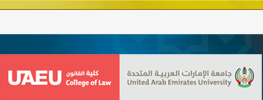Abstract
Banks and financial institutions sometimes have to invest the debts they owe to others because they need money by transferring them to others through many means, the most important of which is securitization, which is the transfer of debts to a mutual debt fund in exchange for tradable securities in the market. However, securitization in this commercial form led to the transfer of debt-related risks to the financial market, which actually caused the global financial crisis of 2008.
Therefore, sukuk represents the Islamic alternative to securitization in terms of its subjection to Islamic controls, the most important of which is the inadmissibility of selling debts, so that the funds transferred to the mutual fund for sukuk are limited to ownership or usufruct rights. Any money actually earned or to be earned. The topic of the research mainly relates to the comparison of the two processes.
On the one hand, both securitization and sukuk are similar in the mechanisms and nature of the institutions involved in the bond offering process, and they raise an important legal problem in terms of the absence of the legal personality of the two funds with their offering of bonds.
On the other hand, the two processes differ in their essence. If sukuk seems to be consistent as it transfers real rights to rights on bonds, securitization raises the problem of distinguishing between the personal right - the debts that were transferred to the mutual fund - and the property right that the investor acquires on the bonds.
تضطر البنوك والمؤسسات المالية أحيانا الى استثمار الديون التي لها على الغير لحاجتها للمال و ذلك بتحويلها للغير عبر عديد الوسائل و أهمها التوريق أو التسنيد الذي يتمثل في إحالة ديون لصندوق مشترك للديون مقابل الحصول على أوراق مالية قابلة للتداول في السوق. غير أن التوريق في صيغته التجارية هذه أدى الى نقل المخاطر المتعلقة بالديون الى السوق المالية وهو ما سبّب فعليا الأزمة المالية العالمية لسنة2008.
لهذا يمثل التصكيك البديل الإسلامي للتوريق من حيث خضوعه للضوابط الإسلامية وأهمها عدم جواز بيع الديون، بحيث يقتصر الأموال المُحالة على الصندوق المشترك للصكوك على حقوق ملكية أو انتفاع. أي أموال مكتسبة فعلا أو سيتم اكتسابها. يتعلق موضوع البحث أساسا بمقارنة العمليتين.
من جهة أولى يشترك كل من التوريق و التصكيك في الآليات و طبيعة المؤسسات المتدخلة في عملية طرح السندات و يطرحان إشكالية قانونية هامة من حيث انتفاء الشخصية المعنوية للصندوقين مع طرحه للسندات.
غير أنه من جهة ثانية تختلف العمليتان من حيث جوهرهما، فلئن بدا التصكيك منسجما إذ يحوّل حقوقا عينية لحقوق على سندات فان التوريق يثير إشكال التمييز بين الحق الشخصي- الديون التي تمت إحالتها للصندوق المشترك-وحق الملكية الذي يكتسبه المستثمر على السندات.
Recommended Citation
Hamrouni, Nizar Dr.
(2024)
"TITRISATION ET «SUKUKISATION» EN DROIT TUNISIEN,"
UAEU Law Journal: Vol. 2024:
No.
98, Article 7.
Available at:
https://scholarworks.uaeu.ac.ae/sharia_and_law/vol2024/iss98/7

